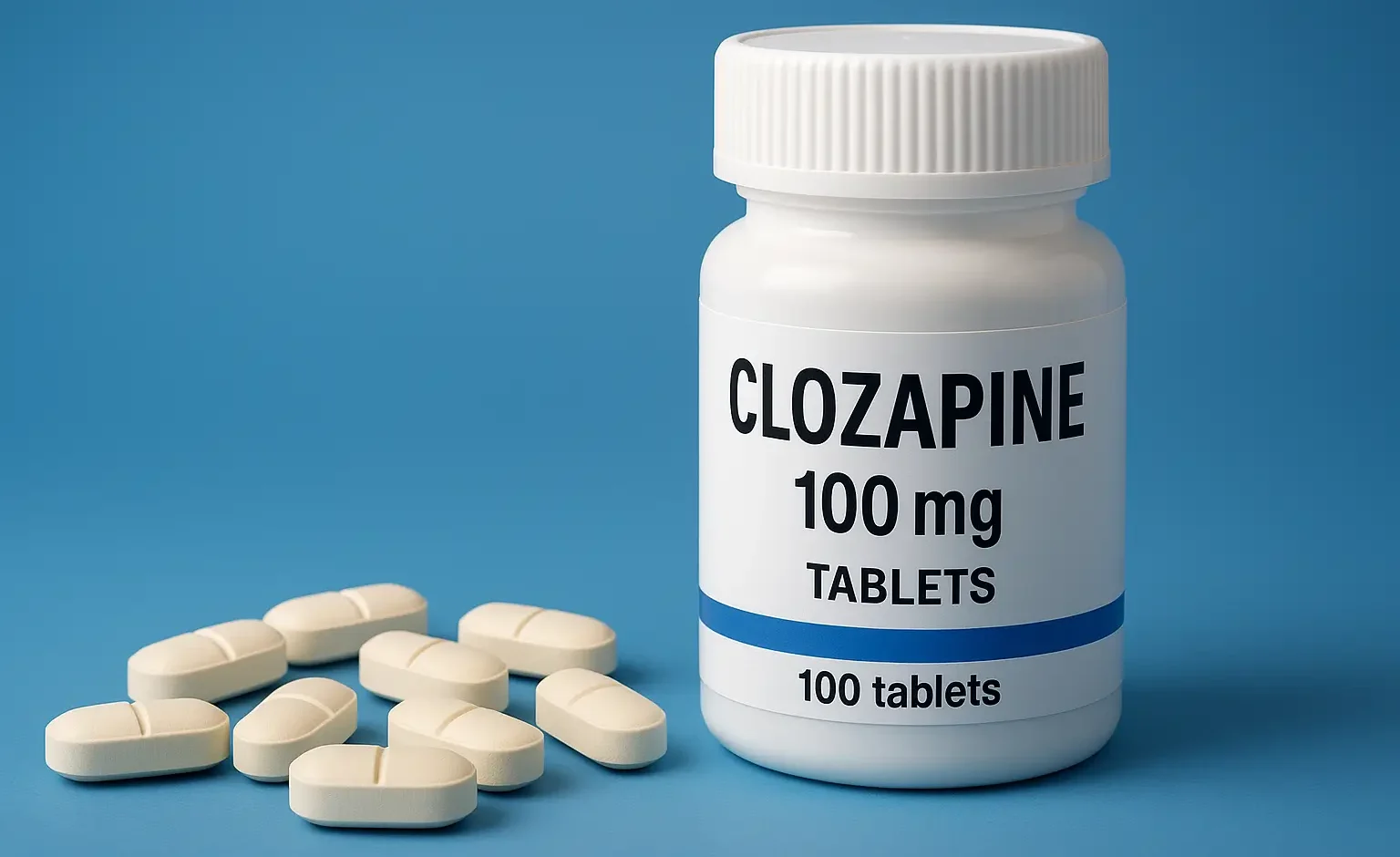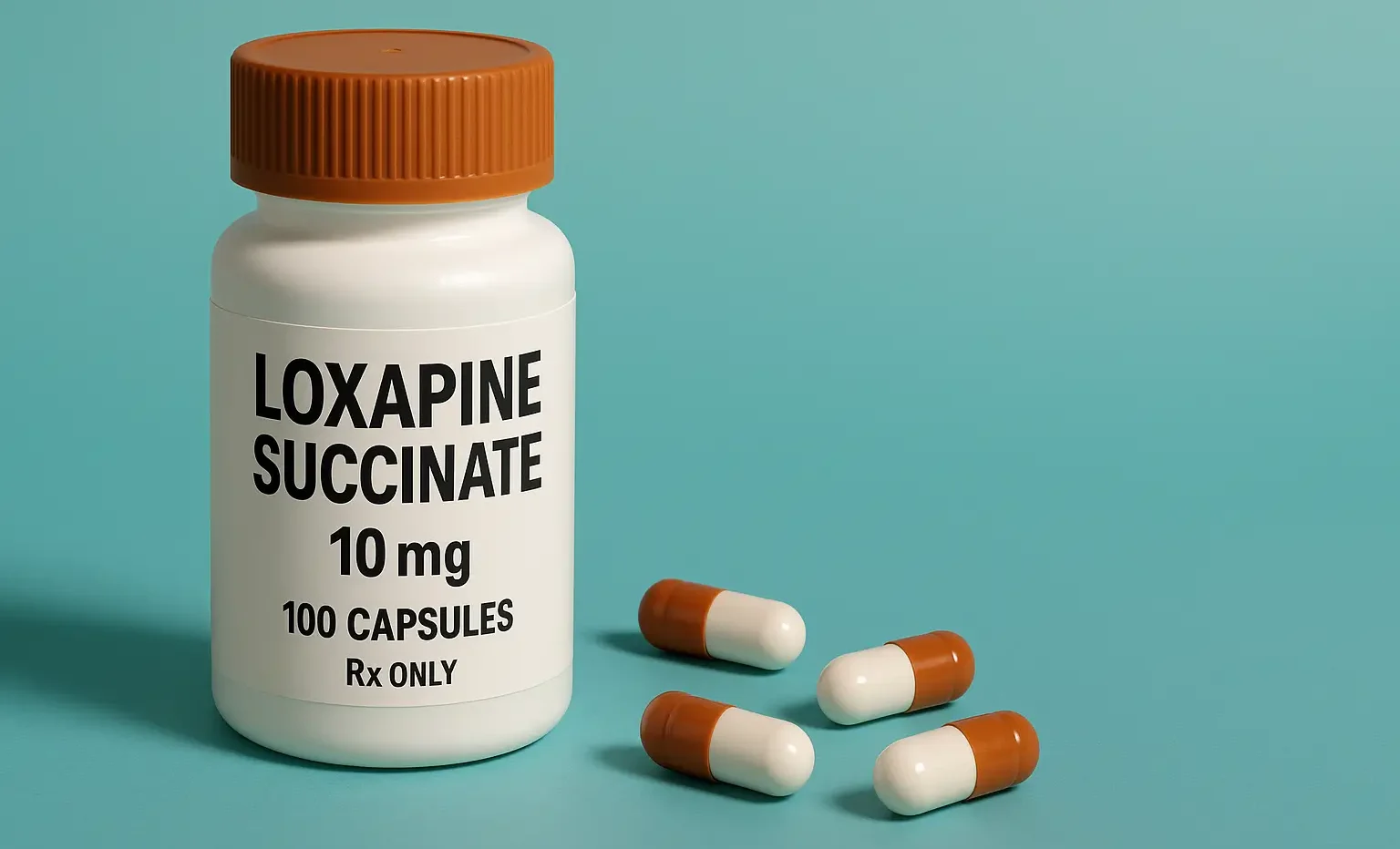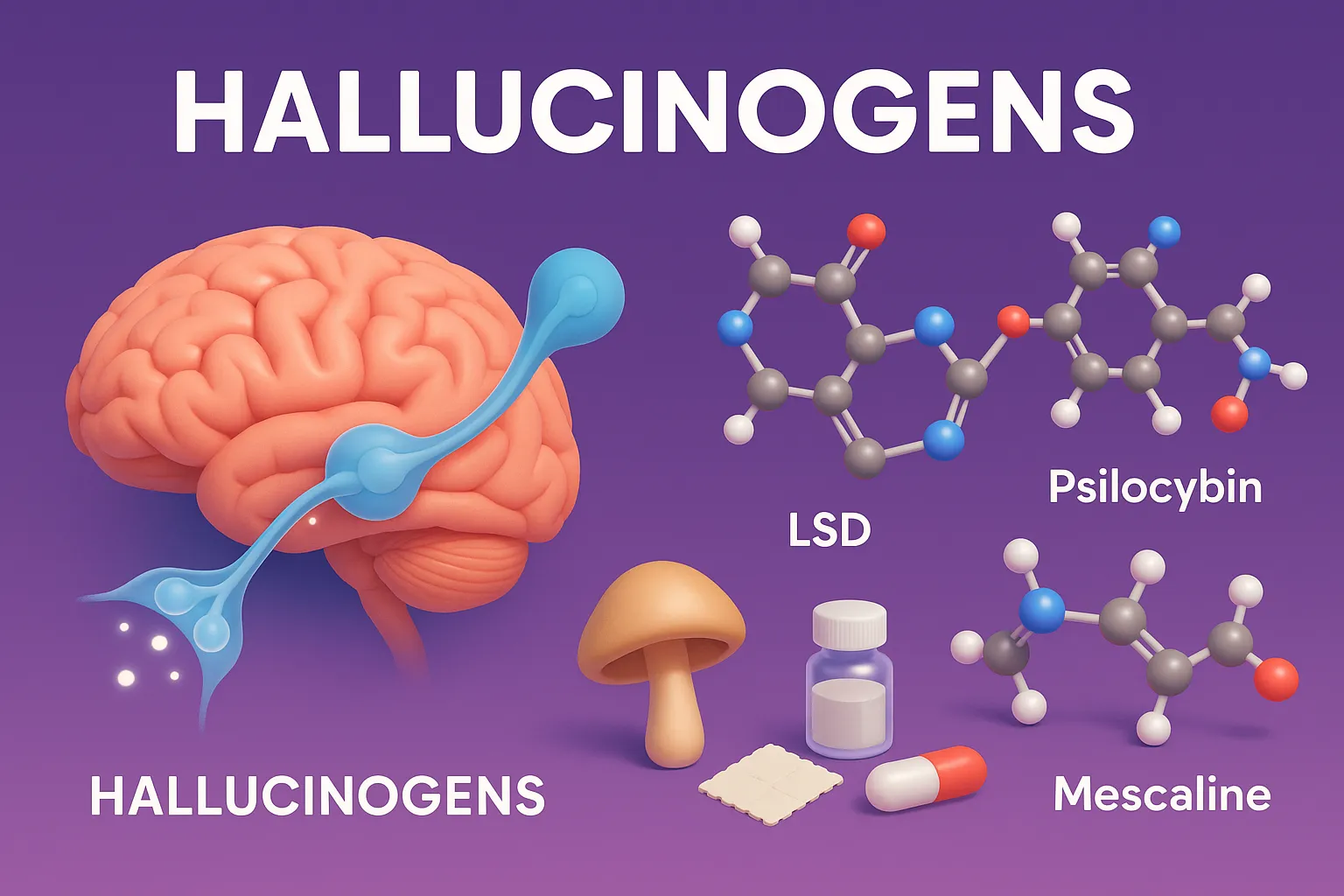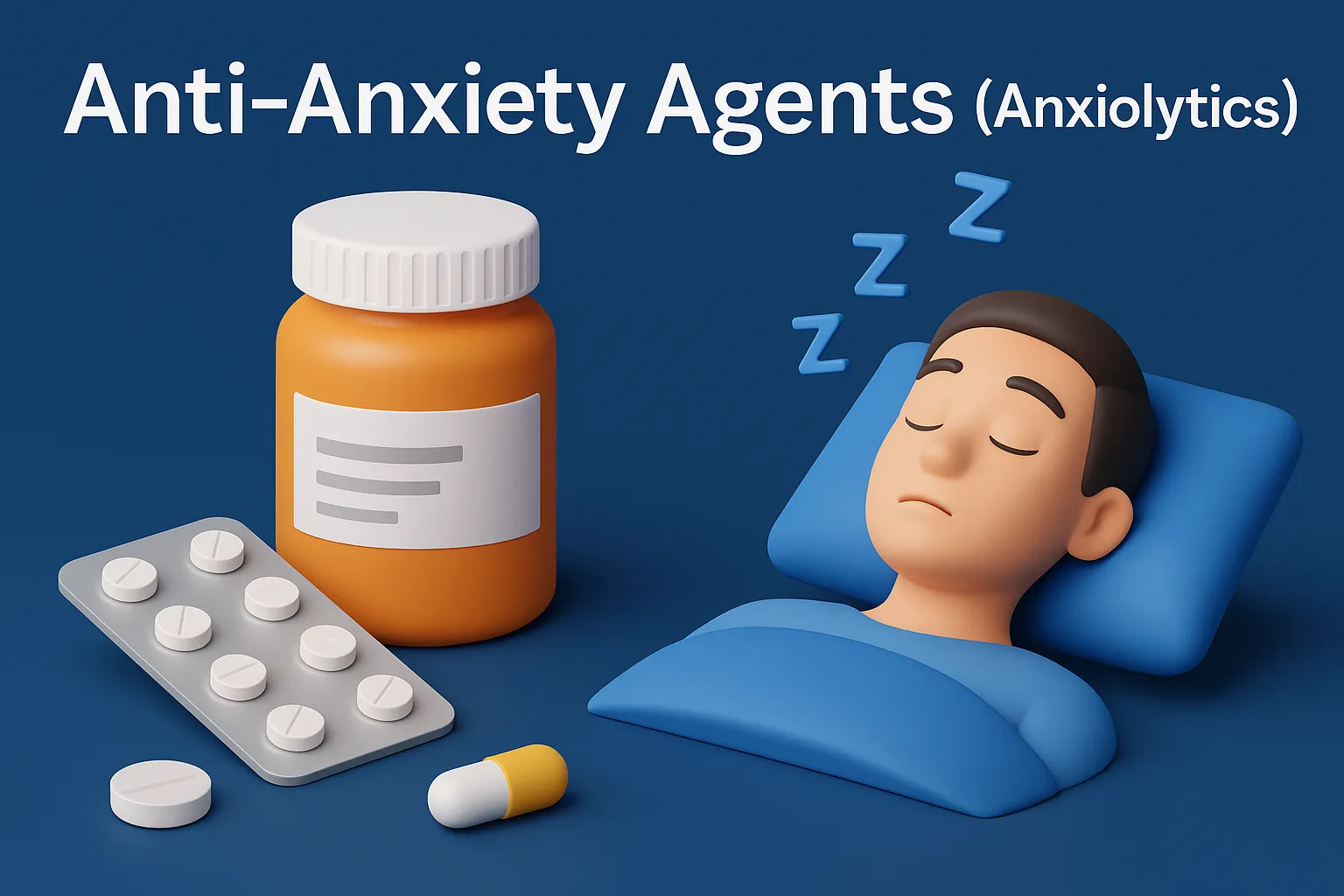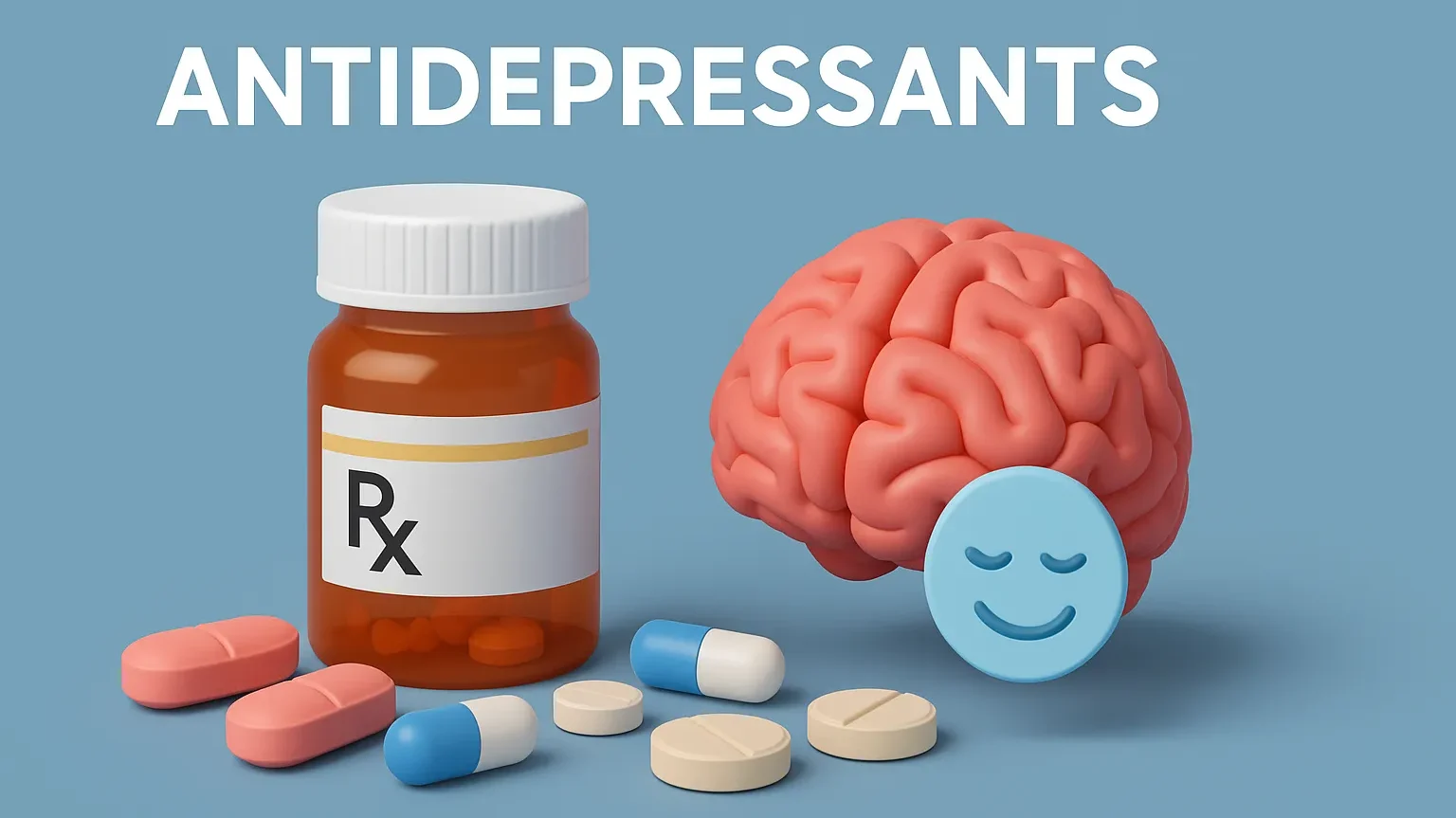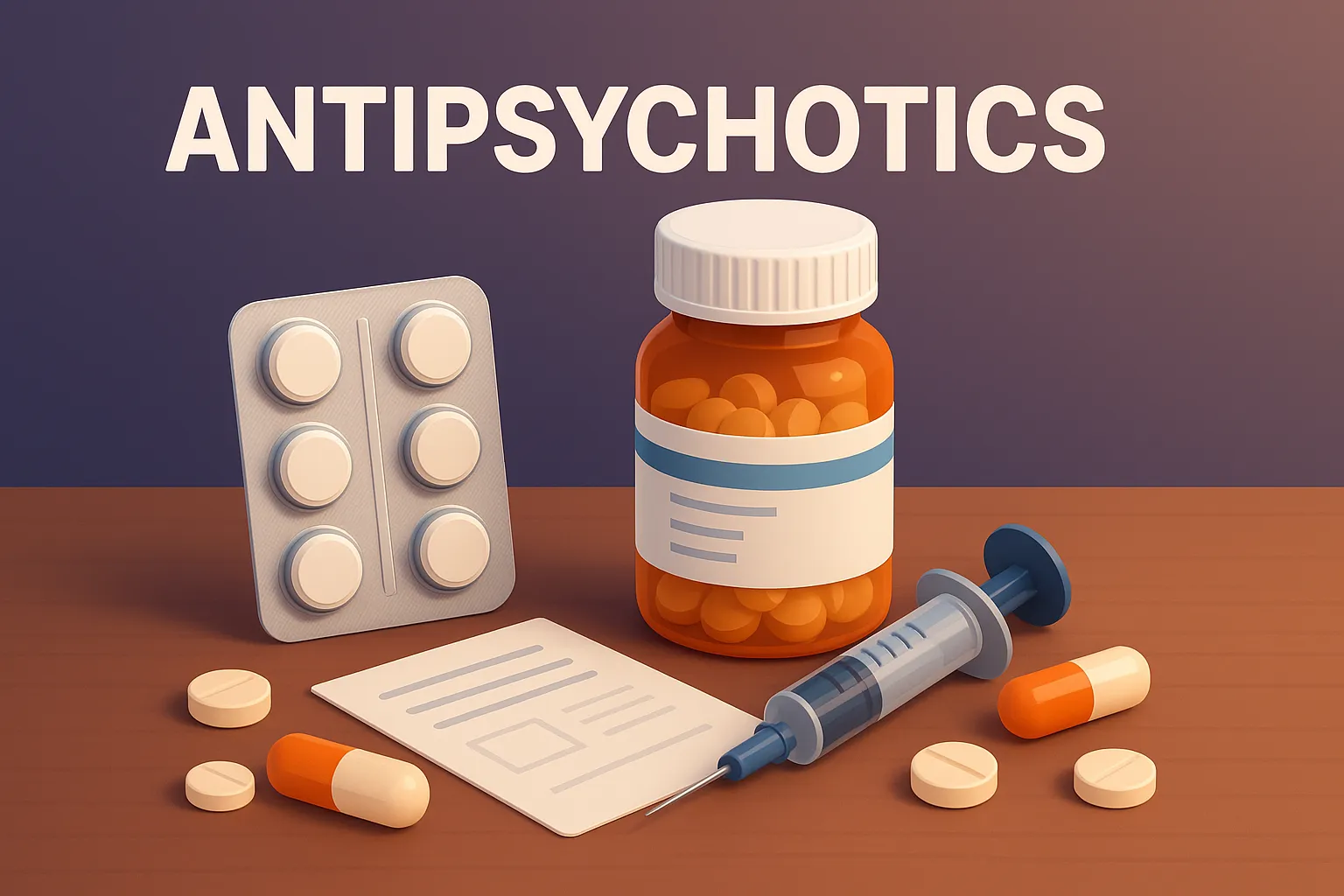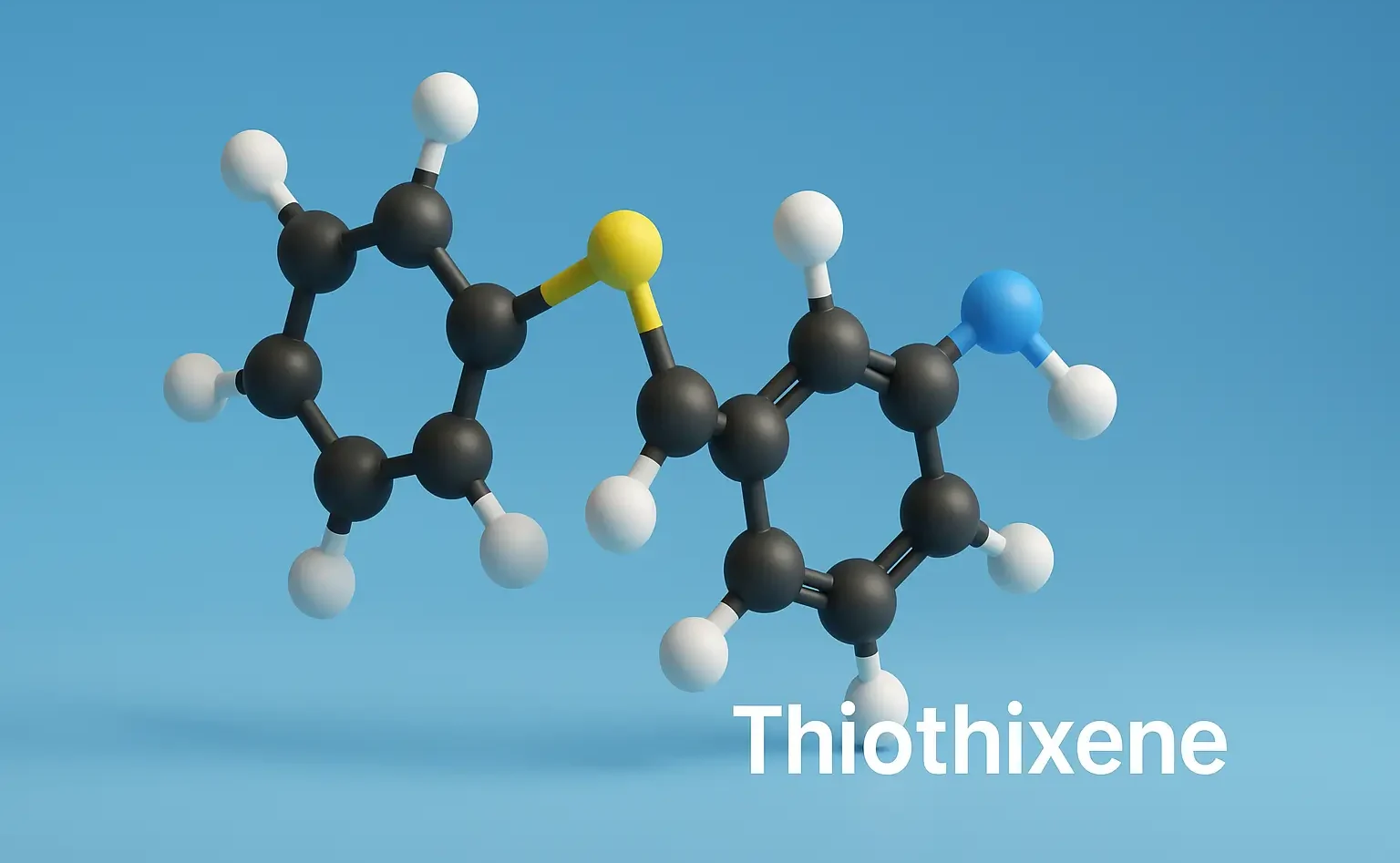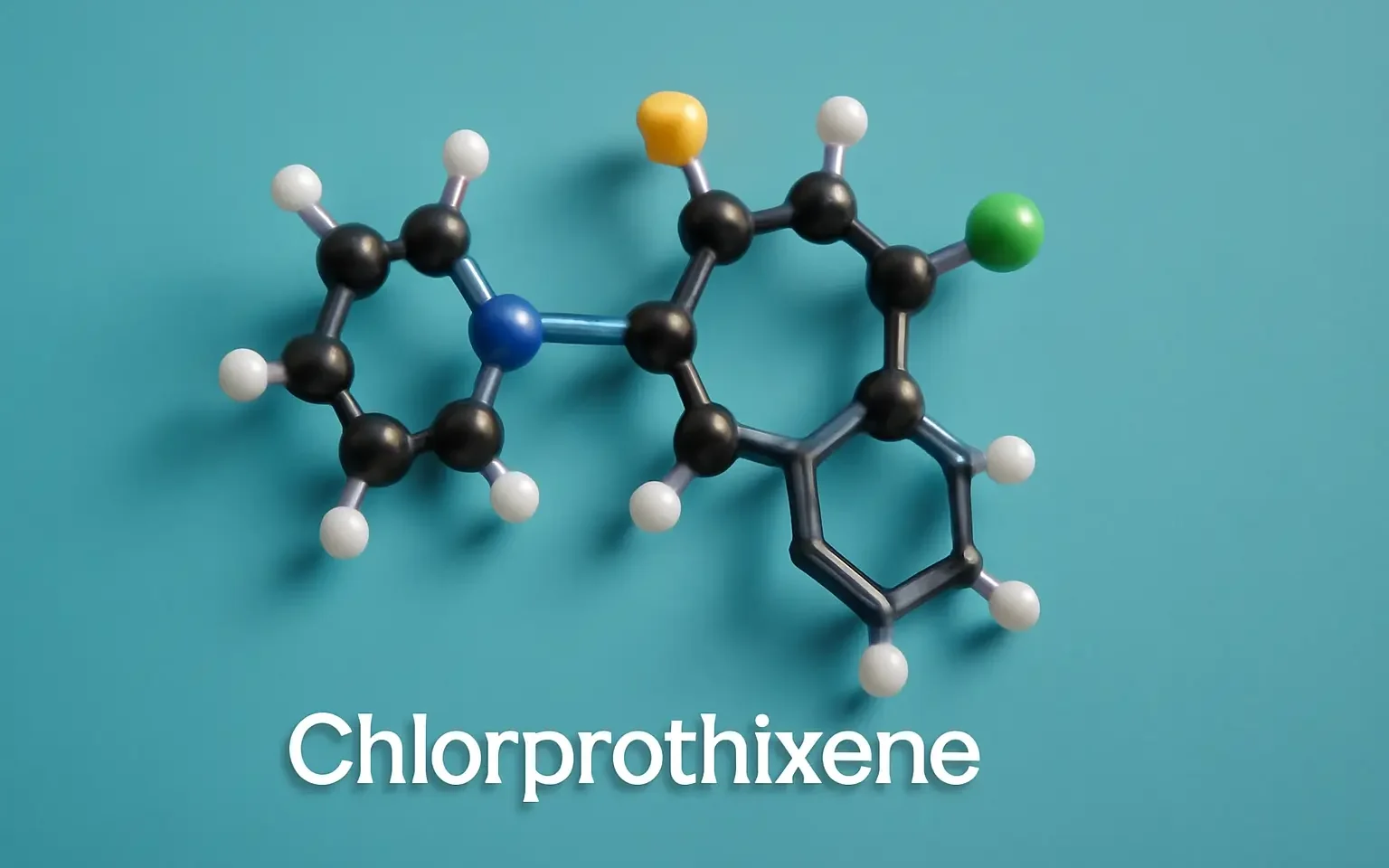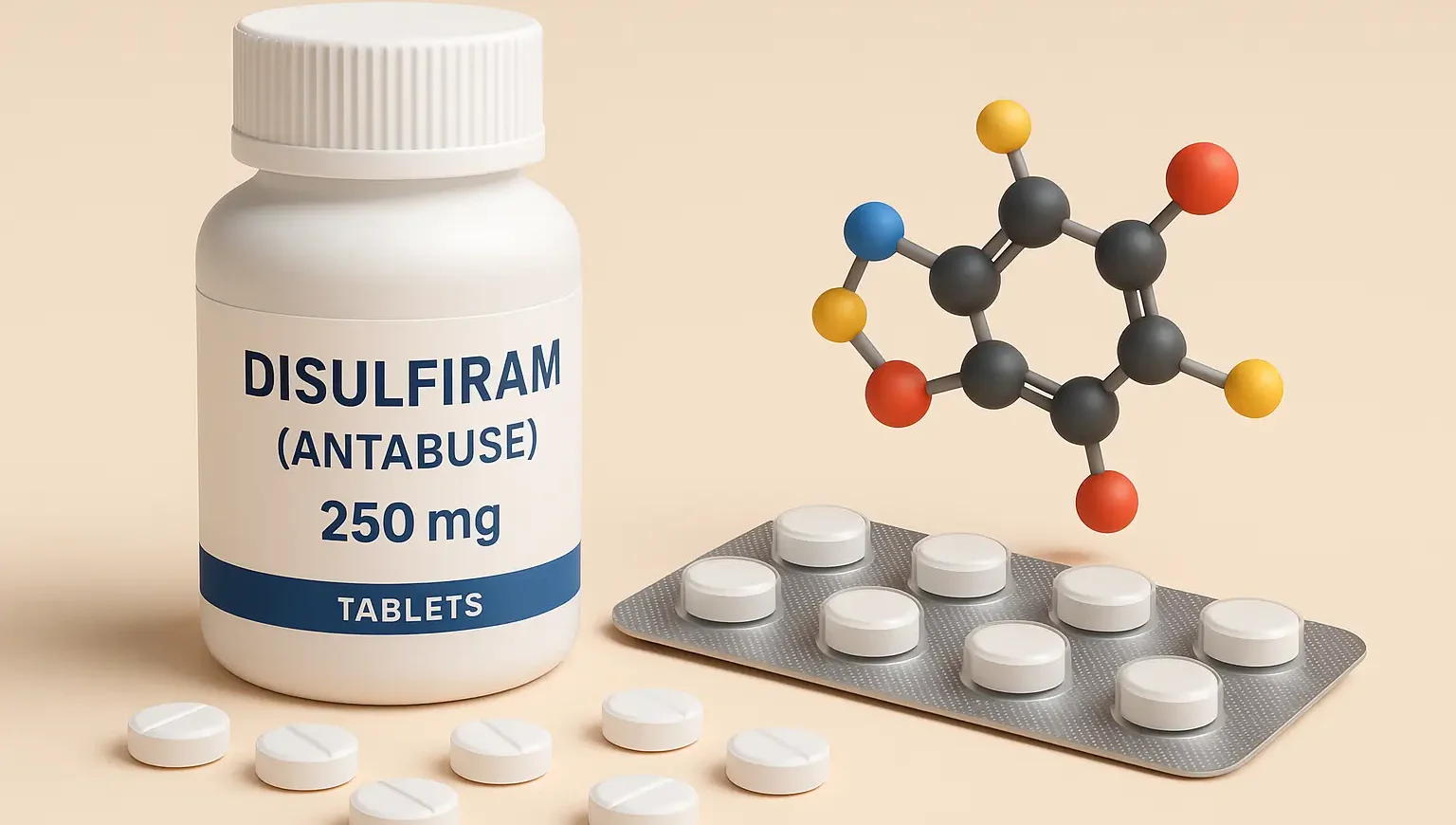Clozapine
Clozapine treats resistant schizophrenia, reducing hallucinations, delusions, and suicidal risk. It treats resistant schizophrenia, reducing hallucinations, delusions, and suicidal risk. Chemical Formula: C₁₈H₁₉ClN₄ Mechanism of Clozapine: Weak D2 antagonist, strong 5-HT2A, D4 antagonist Also affects M1, H1, α1 receptors Uses of Clozapine: Treatment-resistant schizophrenia Reduction of suicide risk in schizophrenia Side Effects: Agranulocytosis (requires WBC … Read more

